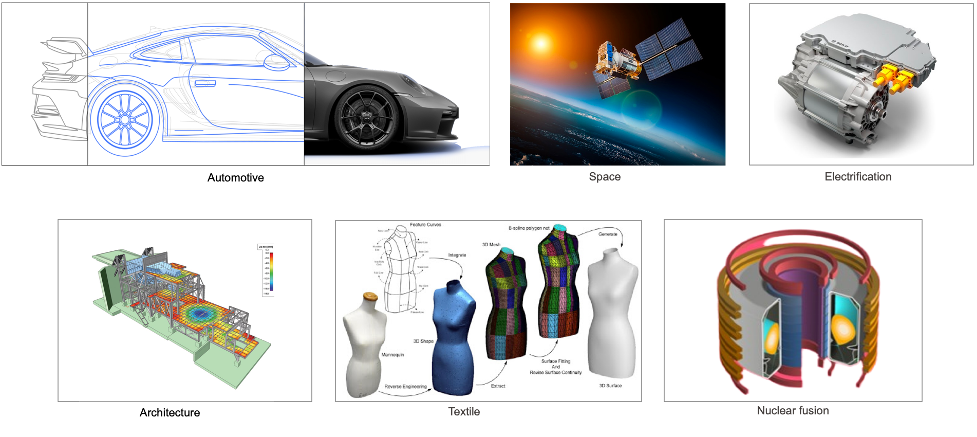
We live in a world full of manufactured objects of ever-increasing complexity that require clever engineering to be functional. Today, individual parts of these objects are often optimized separately, control is rarely accounted for at design time, and much manual tinkering is required.
These shortcomings can largely be ascribed to the composite nature of industrially-designed objects, such as those above. Essentially, these are assemblies of shapes that must fit together and that should be optimized jointly. Unfortunately, current optimization techniques often rely on handcrafted, low-dimensional shape parameterizations or on dimensionality reduction techniques with limited generalization abilities. Thus, they cannot fully explore the typically immense design space, while handling all the necessary physical and design constraints.
We are embarking on an ambitious project to rectify these shortcomings by developing end-to-end trainable pipelines that simultaneously: Optimize individual parts; enforce all the required constraints among them; and effectively exploit synergies between shape and controller design, without having to limit the expressiveness of the models.
This will involve several subprojects in the following areas:
- Integrating Physics, Geometry, and Topology into Deep Networks. As real objects and machines are assemblies of a variety of shapes that must fit together and obey physical and design constraints, the surfaces produced by the deep networks must satisfy all these requirements. Unfortunately, it is notoriously difficult to impose such constraints on the output of deep networks, to the point where it has sometimes been described as impractical.
- Characterizing and Sample the Design Space. The space of all possible shapes is enormous and difficult to fully explore. When attempting to optimize the aerodynamic, hydrodynamic, or load-bearing properties of 3D shapes, most current automated search techniques are effective only for shapes defined in terms of relatively few parameters.
- Co-Designing for Shape and Control. Controllers aim to regulate the output of a system such that it exhibits the desired behavior in the presence of disturbances and uncertainty. There has been some work in control co-design, which involves designing the system components for effective control. However, it usually involves only a relatively small number of design variables.
The exact nature of these subprojects will be discussed and refined in conversation with Prof. Fua.
Prerequisites:
- Masters in Computer Science or related field.
- An interest in combining physics and computer science is a must.
- Familiarity with deep learning and computational fluid dynamics are a plus.
Contact:
If you are interested, please write to pascal.fua@epfl.ch and we will meet in early September when you arrive on campus.